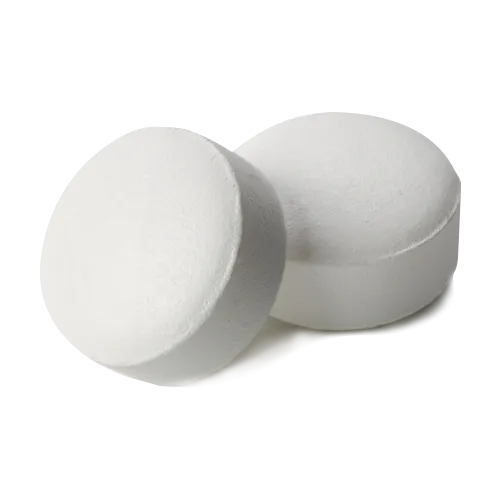Overview
Omnicef, generically known as cefdinir, is a cephalosporin antibiotic used to treat a variety of bacterial infections, including pneumonia, bronchitis, sinus infections, ear infections, and skin infections. It works by disrupting bacterial cell wall synthesis, leading to bacterial death. Available in capsules and oral suspension, it suits diverse patient needs.
History of Development and Approval
Developed by Abbott Laboratories, Omnicef was approved by the FDA in 1997 for bacterial infections. Its broad-spectrum efficacy and favorable safety profile, backed by clinical trials, have made it a widely prescribed antibiotic.
Key Benefits
- Broad-Spectrum Activity: Effective against a wide range of gram-positive and gram-negative bacteria.
- Convenient Dosing: Once or twice daily administration improves compliance.
- Pediatric-Friendly: Oral suspension form simplifies administration for children.
- Good Tolerability: Lower incidence of gastrointestinal side effects compared to some antibiotics.
Unique Properties
Omnicef’s broad-spectrum activity targets respiratory, ear, and skin infections effectively. Its availability in capsules and oral suspension, combined with a convenient dosing schedule, enhances its usability across age groups.
Comparison with Similar Medications
Compared to other cephalosporins, Omnicef offers:
- Wide Coverage: Effective against resistant bacteria, surpassing some older cephalosporins.
- Simplified Dosing: Less frequent dosing compared to antibiotics requiring multiple daily doses.
- Pediatric Suitability: Suspension form is ideal for young patients.
Safety and Tolerability
Omnicef is generally well-tolerated, with common side effects including diarrhea, nausea, and headache. Rare serious effects, such as severe allergic reactions or Clostridioides difficile-associated diarrhea, require prompt attention. Regular monitoring ensures safe use.
Indications for Use
Omnicef is indicated for:
- Respiratory Infections: Community-acquired pneumonia, acute bronchitis, sinusitis.
- Ear Infections: Acute otitis media.
- Skin Infections: Uncomplicated skin and soft tissue infections.
- Throat Infections: Pharyngitis, tonsillitis.
Dosage and Administration
Adults: 300 mg twice daily or 600 mg once daily for 5–10 days, depending on infection.
Children (6 months–12 years): 7 mg/kg twice daily or 14 mg/kg once daily, max 600 mg/day.
Elderly: Standard dosing, adjust for renal function.
Timing: With/without food, consistent schedule.
Notes: Complete full course; shake suspension well.
Mechanism of Action
Cefdinir inhibits bacterial cell wall synthesis by binding to penicillin-binding proteins, disrupting cell wall integrity and causing bacterial death.
Composition
Active Ingredient: Cefdinir, drives antibacterial effects.
Inactive Ingredients: Capsules: carboxymethylcellulose; suspension: sucrose, citric acid for stability.
Side Effects
Common: Diarrhea, nausea, headache, rash.
Rare: Vaginal candidiasis, abdominal pain.
Serious: Severe allergic reactions, C. difficile diarrhea require urgent care.
Prevention of Side Effects
Complete prescribed course, monitor for diarrhea or allergic reactions, maintain hydration. Report severe symptoms promptly.
Contraindications
Avoid in hypersensitivity to cephalosporins or penicillin allergy history.
Warnings and Precautions
Monitor for allergic reactions or gastrointestinal issues. Caution in renal impairment or history of colitis.
Drug Interactions
Antacids or iron supplements reduce absorption; probenecid increases cefdinir levels. Disclose all medications.
Overdose
Symptoms: nausea, vomiting, diarrhea. Seek emergency care immediately.
Pharmacokinetics
Absorption: Well-absorbed, peak 2–4 hours.
Distribution: Widely distributed, moderate protein binding.
Metabolism: Minimal.
Elimination: Kidneys; half-life 1.7–1.8 hours.
Dosage Forms
Capsules (300 mg), oral suspension (125 mg/5 mL, 250 mg/5 mL) for flexible administration.
Pregnancy and Breastfeeding
Use if benefits outweigh risks (Category B); minimal milk excretion, consult provider.
Storage
Store capsules at 20°C–25°C (68°F–77°F), dry, light-protected. Suspension: refrigerate after reconstitution, discard after 10 days. Keep away from children.
Clinical Evidence
Trials confirm Omnicef’s efficacy in treating bacterial infections, with high cure rates for respiratory, ear, and skin infections, and good tolerability.
Conclusion
Omnicef is a potent, broad-spectrum cephalosporin antibiotic with convenient dosing and pediatric-friendly forms. Complete prescribed courses, monitor effects, and consult providers for optimal outcomes.




